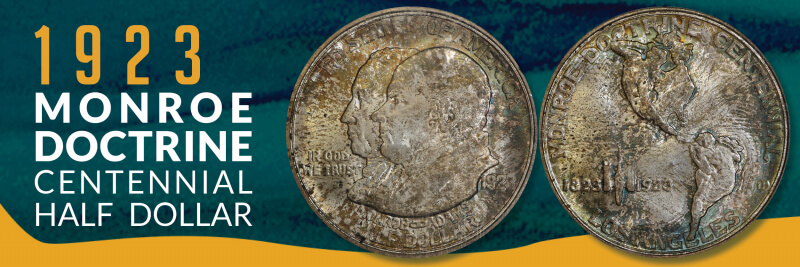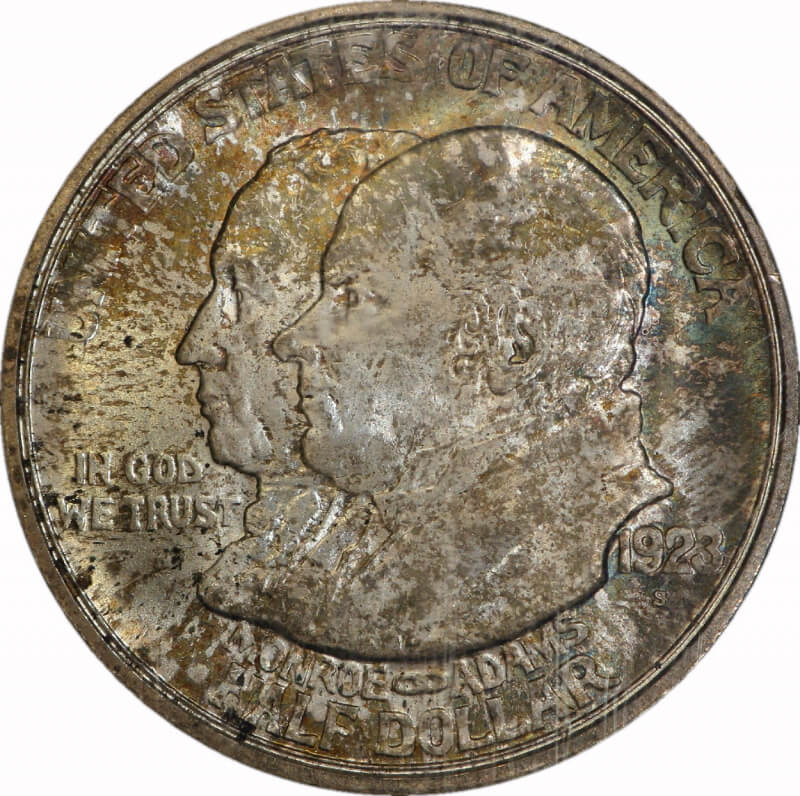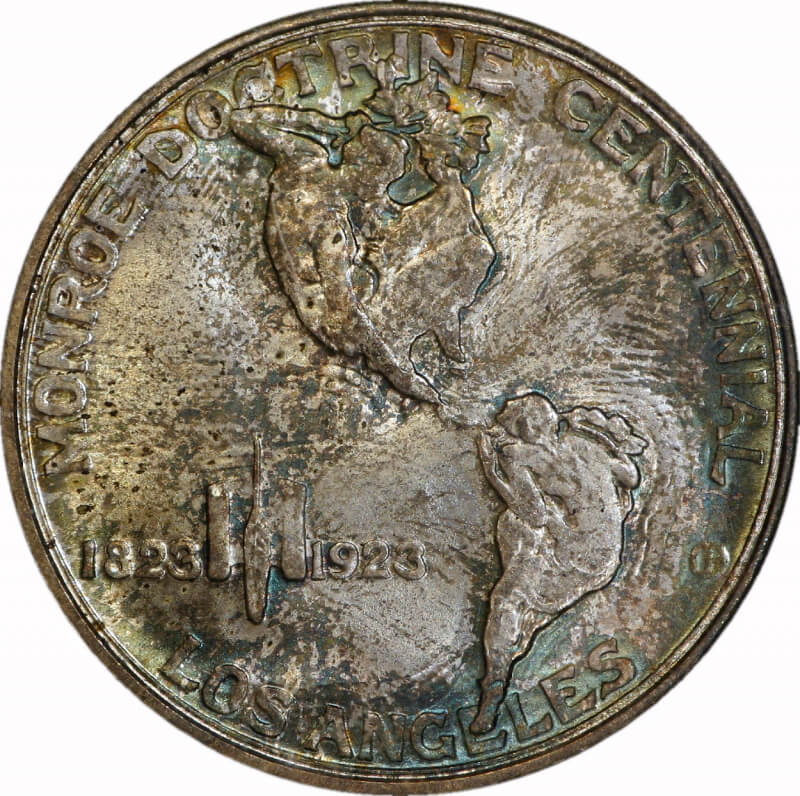
1923 Monroe Doctrine Centennial Half Dollar
Click the images above for enhanced view.
Purpose:
To commemorate the 100th anniversary of the Monroe Doctrine and fund the American Historical Revue and Motion Picture Industry Exposition in Los Angeles.
Maximum Number Authorized: 300,000 pieces.
Sale Price: $1.00
Designs:
Obverse – Chester Beach
Busts of James Monroe and John Quincy Adams facing left.
Online Resource: https://www.history.com/topics/westward-expansion/monroe-doctrine
Reverse – Chester Beach
Two female figures positioned to resemble the Western Hemisphere. The figure representing North America is holding a laurel of peace. She is reaching out with a branch to touch hands with the figure representing South America at the Panama Canal. Faint lines are found in the field representing ocean currents. A scroll and quill pen representing the Monroe Doctrine is located between the dates 1823 and 1923. “MONROE DOCTRINE CENTENNIAL” is located within the border at the top and “LOS Angeles” is found at the bottom of the coin. The designer’s initials, in the form of a circular monogram, are found at the four o’clock position in the field.
Popularity:
A total of 274,000 half dollars were minted for the public. The coins did not sell well. Slightly over 27,000 coins were sold and the rest were placed into circulation at face value.
American Historical Revue and Motion Picture Industry Exposition Online Resources:
https://cinema.usc.edu/archivedassets/32_1/2_Marzola.pdf
https://misterdangerous.wordpress.com/2018/11/05/monroe-doctrine-centennial-at-exposition-park/
Trivia:
-
The reverse design strongly resembles the 1901 Pan-American Exposition Seal. Raphael Beck, designer of the seal, believed that Chester Beach had plagiarized his work.
-
The Motion Picture Exposition had hoped for a total attendance of one million people. Just over 300,000 attended by the closing date of August 4, 1923.
-
The Exposition had scheduled President Warren Harding to attend the fair but he died on the day he was scheduled to attend.
-
John Quincy Adams was secretary of state during the Monroe administration and was instrumental in creating the policy.
-
Adams became the sixth president of the United States. He walked over three miles daily and often swam in the Potomac River in the early mornings.
-
The capital of Liberia is Monrovia, named after James Monroe.
-
John Quincy Adams worked for George Washington as his minister to the Netherlands and with Abraham Lincoln when both served in the House of Representatives.
For more information:
Encyclopedia of the Commemorative Coins of the United States by Anthony J. Swiatek
KWS Publishers (2012)
Commemorative Coins of the United States Identification and Price Guide by Anthony J. Swiatek
Amos Press Publishers (2001)
The Making of the Monroe Doctrine by Ernest R. May
Published by Harvard University Press (1975)
References:
Encyclopedia of the Commemorative Coins of the United States by Anthony J. Swiatek
KWS Publishers (2012)
The Encyclopedia of United States Silver & Gold Commemorative Coins 1892 to 1954 by Anthony Swiatek and Walter Breen
Arco Publishing, Inc. (1981)

